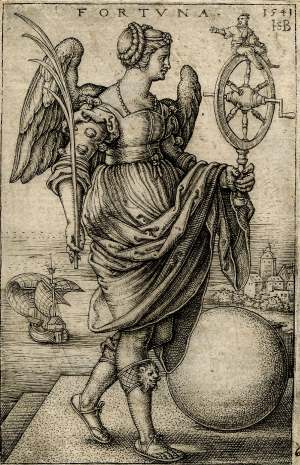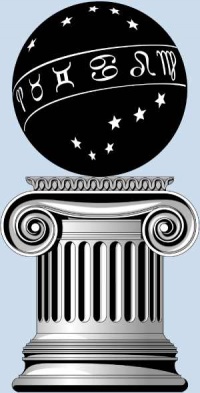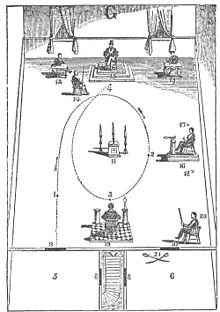En: Symbolic Actions: Unterschied zwischen den Versionen
Keine Bearbeitungszusammenfassung |
|||
| Zeile 10: | Zeile 10: | ||
When we think of Masonic symbols it’s usually in relation of those that appear on the Tracing Boards, or that are covered in the catechisms and lectures. There are, however, other symbols that are hidden within actions, or within other symbols. The system of instruction presented is highly complex, and an understanding of it is largely reliant upon the candidate’s level of classical instruction. This is, perhaps, why it was of particular interest to members of the Royal Society during the early days of the Age of Enlightenment. They recognized in Freemasonry the same system of philosophy and cosmology that had led to the great scientific and engineering achievements of ancient Rome. It was also clear to them that this system would need to remain veiled in a Judeo-Christian allegory for the foreseeable future because the western world wasn’t prepared for such a major shift in thought. | When we think of Masonic symbols it’s usually in relation of those that appear on the Tracing Boards, or that are covered in the catechisms and lectures. There are, however, other symbols that are hidden within actions, or within other symbols. The system of instruction presented is highly complex, and an understanding of it is largely reliant upon the candidate’s level of classical instruction. This is, perhaps, why it was of particular interest to members of the Royal Society during the early days of the Age of Enlightenment. They recognized in Freemasonry the same system of philosophy and cosmology that had led to the great scientific and engineering achievements of ancient Rome. It was also clear to them that this system would need to remain veiled in a Judeo-Christian allegory for the foreseeable future because the western world wasn’t prepared for such a major shift in thought. | ||
[[Datei:Jachin sm.jpg|thumb|200px|left]] | [[Datei:Jachin sm.jpg|thumb|200px|left]] | ||
[[Datei:Masonic-circumambulation.jpg|thumb|350px|masonic circumambulation]] | |||
Some of the peculiarities of Masonic philosophy will be discussed in this article. Specifically those which deal with Fate and Fortune. We first alluded to these in Part 1 of this series on the Lost Symbols of Freemasonry. What is most interesting about these symbols is the unconventional way in which Freemasonry utilizes them. | Some of the peculiarities of Masonic philosophy will be discussed in this article. Specifically those which deal with Fate and Fortune. We first alluded to these in Part 1 of this series on the Lost Symbols of Freemasonry. What is most interesting about these symbols is the unconventional way in which Freemasonry utilizes them. | ||
Version vom 17. November 2015, 19:46 Uhr
Symbolic Actions
by Jeff Peace
Source: Lost symbols of freemasonry by David Harrison.
When we think of Masonic symbols it’s usually in relation of those that appear on the Tracing Boards, or that are covered in the catechisms and lectures. There are, however, other symbols that are hidden within actions, or within other symbols. The system of instruction presented is highly complex, and an understanding of it is largely reliant upon the candidate’s level of classical instruction. This is, perhaps, why it was of particular interest to members of the Royal Society during the early days of the Age of Enlightenment. They recognized in Freemasonry the same system of philosophy and cosmology that had led to the great scientific and engineering achievements of ancient Rome. It was also clear to them that this system would need to remain veiled in a Judeo-Christian allegory for the foreseeable future because the western world wasn’t prepared for such a major shift in thought.
Some of the peculiarities of Masonic philosophy will be discussed in this article. Specifically those which deal with Fate and Fortune. We first alluded to these in Part 1 of this series on the Lost Symbols of Freemasonry. What is most interesting about these symbols is the unconventional way in which Freemasonry utilizes them.
From open to close a Masonic Lodge presents a fated cycle of events predetermined by the ritual. The sun rises in the east, reaches its meridian, and then sets in the west. The three officers stations are symbolic of Past, Present, and Future. Masons have Faith in the Wisdom of the past, Charity (loving kindness) for all mankind in the Present, and Hope in the betterment of mankind in the Future. This symbolic allusion also applies to the individual Mason.
Of the aforementioned the most important is Charity (the Present moment) because it is better to live one’s life with loving kindness towards all, and because the Past cannot be undone, and the Future is unknowable. That the Present moment is paramount is symbolized by the Winged Hourglass (time flies). It is with, and because of, this ancient knowledge that a Freemason is allowed to join and enter a Lodge (symbolized by the Beehive).
JachinFate and Fortune are commonly considered one and the same by practitioners of Astrology. Within Masonic philosophy, however, they are symbolically independent of one another. Fate is illustrated as the Celestial Globe wrapped inside the zodiacal wheel that sits atop the Senior Warden’s column, and is referred to as ‘Jachin’ (Strength). This wheel is controlled by the Great Architect of the Universe (God), and is indicative of His Strength or omnipotence over not only the cosmos, but the lives of men. It determines the initial Fate of the individual, but not his future.Masonic Circumambiulation
Fortune is illustrated by the circumambulation of the candidate around the Black and White tiled floor of the lodge room. The black and white squares are symbolic of good and evil fortune. That each candidate will necessarily step on different tiles is symbolic of the differences in fortune allotted to each individual.
Masonic philosophy is similar to that of Stoicism, in that Fate is not entirely predetermined, it is the result of past actions building one upon another (cause and effect). Fortune is symbolized by the blind arbitrary steps taken by the profane who has not yet been enlightened to the nature of Fate. Since he is blind to the ‘Light’ of Reason, he has no control over the actions which will ultimately determine his Fate. The Master Mason, however, has been symbolically instructed, and follows Reason.
Grand Lodge of MassachusettsOne of the early seals used by Masonic lodges included the phrase ‘Follow Reason’. It is still used by the Grand Lodge of Massachusetts to this day.



